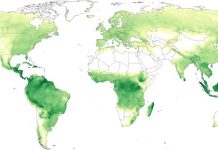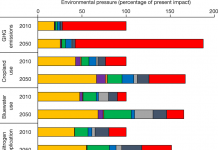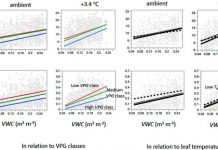【未来城市土壤扩张及其对全球耕地的影响】Christopher Bren d’Amour et al. Future urban land expansion and implications for global croplands. PNAS 2016 doi: 10.1073-pnas.1606036114
Abstract
Urban expansion often occurs on croplands. However there is little scientific understanding of how global patterns of future urban expansion will affect the world’s cultivated areas. Here we combine spatially explicit projections of urban expansion with datasets on global croplands and crop yields. Our results show that urban expansion will result in a 1.8–2.4% loss of global croplands by 2030 with substantial regional disparities. About 80% of global cropland loss from urban expansion will take place in Asia and Africa. In both Asia and Africa much of the cropland that will be lost is more than twice as productive as national averages. Asia will experience the highest absolute loss in cropland whereas African countries will experience the highest percentage loss of cropland. Globally the croplands that are likely to be lost were responsible for 3–4% of worldwide crop production in 2000. Urban expansion is expected to take place on cropland that is 1.77 times more productive than the global average. The loss of cropland is likely to be accompanied by other sustainability risks and threatens livelihoods with diverging characteristics for different megaurban regions. Governance of urban area expansion thus emerges as a key area for securing livelihoods in the agrarian economies of the Global South.
【水分平衡建立了全球范围内土壤pH的阈值】E. W. Slessarev et al. Water balance creates a threshold in soil pH at the global scale. Nature 540 567–569 (22 December 2016) doi:10.1038-nature20139
Abstract
Soil pH regulates the capacity of soils to store and supply nutrients and thus contributes substantially to controlling productivity in terrestrial ecosystems1. However soil pH is not an independent regulator of soil fertility—rather it is ultimately controlled by environmental forcing. In particular small changes in water balance cause a steep transition from alkaline to acid soils across natural climate gradients2 3. Although the processes governing this threshold in soil pH are well understood the threshold has not been quantifie







